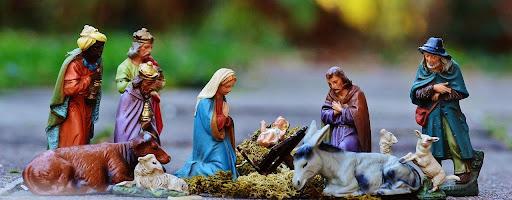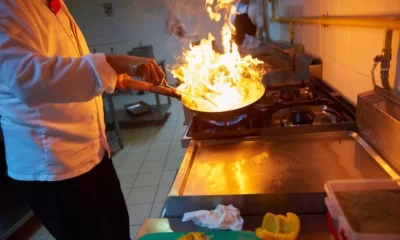Lifestyle
Significance Of Animals In The Nativity Scene!

With Christmas quickly coming, most of us have probably begun planning our holiday decorations and putting up our Nativity scenes. Most will follow the standard format, placing the manger in the middle and surrounding it with guarding shepherds and gift-bearing Magi.
Whether depicted in religious art, poetry, or an actual Nativity scene at Christmastime, animals have always played a role. This depiction of a merging of humans and animals dates back to at least the fourth century. It’s a concept that the vast majority of us, Christian or otherwise, have come to embrace as an accurate depiction of Jesus’ Birth. On the contrary, we continue to include animals in our Christmas decorations because we believe they were there when He was born. Animals for your nativity scene may be found in abundance at Holyart. You will surely find the ones that best suit your scene.
Learn the significance of the animals in your Christmas nativity displays.
Table of Contents
The Ox
The ox has a rich history in several religious traditions. The ox has extremely little representation in mainstream culture, with the exception of its role in the story of the Birth of Jesus. Nevertheless, it is considered to be a key creature in many different faiths, and it is usually seen to be a symbol of genuine faith, a devotion that involves sacrifice and sanctity. It is also distinguished from the donkey in that, in contrast to the donkey, it is religious instead of worldly and preoccupied with the material aspects of life.
As the primary witness to Christ’s Birth and the creature that was mostly devoted to taking care of Him, the ox is shown in the majority of pictorial portrayals of the Nativity scene and is referenced in a number of Christmas songs.
The Donkey
The donkey carrying an expectant Mary into Bethlehem on Christmas Night is one of the most iconic images of the animal.
The donkey in the nativity scene has been used as a metaphor for a variety of things across time, from trustworthy steed or load bearer to, more recently, a sign of sloth and folly, thanks in large part to Shakespeare’s portrayal of the animal. Donkeys have long been revered because their characteristics, which include modesty, bravery, and endurance, are seen as analogous to those of Jesus.
Similarly to the donkey, the ox has been honored in religious traditions. The ox has a little cultural footprint, limited mostly to its appearance during Christ’s Birth. It is nevertheless a pivotal being in many faiths, serving as a symbol of piety, sacrifice, and steadfast belief.
Sheepdogs
The swarm of creatures that live in the hut almost always includes at least one canine resident. The dog guards the shepherds and the sheep flock, and as such, it is a sign of alertness and security. There are frequently a lot of figurines depicting various kinds of animals included in a lot of nativity scenes. This demonstrates that all of God’s creation, including the animal world, is taken into consideration throughout the Christmas season.
Sheep
The Bible has the most frequent reference to sheep or any other animal. During that historical period, people did not regard them to be dumb animals but rather beneficial ones. There are a great number of allusions to sheep and lambs in the Bible, both within the Old and New Testaments.
Also, Check – 6 Of The Best Smells to Have in Your Home
Camel, Horse, and Elephants
In certain nativity scenes, one may also find exotic creatures like elephants, camels, and at least a horse. Other common nativity animals include a sheepdog. The famous three wise men who had traveled from the East were the owners of the three riding animals. They were supposed to portray the three continents that were recognized at the time: Africa, Asia, and Europe. The magnificent elephant, which is supposed to be positioned alongside the king with dark skin, is meant to symbolize Africa. King Balthazar used a camel to portray Asia, and Melchior used a horse to depict Europe.
Nativity figurines like elephants and camels have intricate designs, but their primary purpose is to make the tableau more interesting during the Epiphany.

-

 Business4 years ago
Business4 years agoHow to Do Long-Distance Moves with Children
-

 Business2 years ago
Business2 years agoThe Ultimate Guide To Thriving In Your Printing Franchise
-

 Business2 years ago
Business2 years agoExploring The Benefits And Challenges Of Restaurant Franchising
-

 Tech4 years ago
Tech4 years agoCyber Table That Will Change Your Life
-

 Business5 years ago
Business5 years agoIs Guest Posting a Good Inbound Marketing Strategy?
-

 Lifestyle2 years ago
Lifestyle2 years agoDallas’ Hidden Gems: 6 Must-Try Restaurants Off The Beaten Path!
-

 Lifestyle3 years ago
Lifestyle3 years agoTop 10 Restaurant Franchises In The US
-

 Business2 years ago
Business2 years agoTop 10 Reasons You Should Invest In A Coworking Franchise













Recent Comments